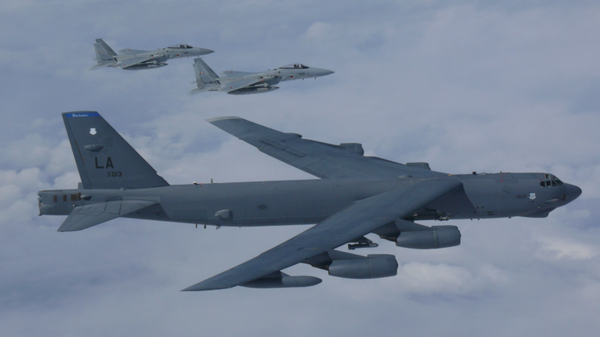Instead of building weapons, the US military could use more data in order to more effectively use existing ones, head of the Air Force Global Strike Command (AFGSC) Tim Ray suggested during a video conference with the Mitchell Institute. In his opinion, data currently takes priority over additional B-21 stealth bombers and the quicker deployment of new missiles.
"I would spend [an extra dollar] on building the best data lake and analytical tools that I could. That has to be how you leverage some very powerful tools for a small team to do things very strategically", Tim Ray said.
The US military has already taken steps in that direction. Namely, a technology called the Unified Data Library (UDL) has been devised to collect information from several sources, such as awareness data received from the Army, US allies, or even commercial companies. This data will later be accessible to any part of the military, if needed, on demand. The technology recently morphed into a broader project called dataONE, capable of assembling data from more "domains".
In his remarks, Tim Ray brought up a significant success that was achieved by a former Air Force department, but which is now part of the newly formed Space Force.
"The Space Force has done some good work with their data efforts; we’re tied to them. The task in front of us now is to work with each of the wings in the squadrons to make sure that data becomes more consistently organised and, you know, discoverable", he said.
Among the possible uses of such "data lakes" mentioned by Tim Ray is predictive maintenance that will allow replacing parts of military equipment before they fail, as well as the use of data in intelligence, surveillance, and reconnaissance (ISR). Another possible application for dataONE is to support US military modernisation efforts that will allow the Pentagon to have "the best return on investment", as Ray described it.
Tim Ray noted that currently, the Pentagon is focused on buying hundreds of long-range hypersonic weapons as soon as possible, but noted that without data and a system to collect and unify it, these missiles will be of little use.
"The first thing in my mind is: how do you build a kill chain for it? You’ve got to have Joint All-Domain Command and Control, ABMS and a relevant, you know, future scenario. If you don’t have that, you’ll just miss fast", the head of the AFGSC concluded.






